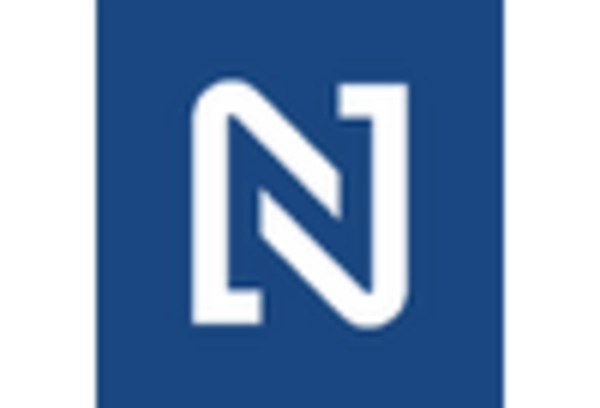Rising Agricultural Applications
The agricultural sector's increasing reliance on biodegradable chelating agents is a significant driver for the market. These agents are essential in enhancing nutrient availability and improving soil health, which is crucial for sustainable farming practices. Recent studies suggest that the use of biodegradable chelating agents in agriculture can lead to a 20% increase in crop yield while minimizing environmental impact. As farmers seek to adopt more sustainable practices, the demand for biodegradable options is expected to rise. This trend is further supported by the growing organic farming movement, which emphasizes the use of eco-friendly inputs. Consequently, the biodegradable chelating-agents market is likely to experience robust growth as agricultural stakeholders prioritize sustainability and efficiency in their operations.
Increasing Environmental Awareness
The growing consciousness regarding environmental issues among consumers is a pivotal driver for the biodegradable chelating-agents market. As individuals and organizations become more aware of the detrimental effects of traditional chelating agents on ecosystems, there is a marked shift towards sustainable alternatives. This trend is reflected in market data, indicating that the demand for biodegradable options has surged by approximately 25% over the past year. Companies are responding by reformulating products to include biodegradable chelating agents, thereby aligning with consumer preferences. This shift not only enhances brand reputation but also opens new market opportunities, as environmentally conscious consumers are willing to pay a premium for sustainable products. Consequently, the biodegradable chelating-agents market is poised for growth as awareness continues to rise, driving innovation and investment in eco-friendly solutions.
Regulatory Incentives for Sustainable Chemicals
Regulatory frameworks in the United States are increasingly favoring the use of biodegradable substances, which significantly impacts the biodegradable chelating-agents market. Government policies aimed at reducing environmental pollution and promoting sustainable practices are creating a conducive environment for the adoption of biodegradable alternatives. For instance, recent legislation has introduced incentives for manufacturers to develop and utilize eco-friendly chemicals, including chelating agents. This regulatory support is expected to boost market growth, with projections indicating a potential increase in market size by 15% over the next five years. As compliance with environmental regulations becomes more stringent, companies are likely to invest in biodegradable formulations, thereby enhancing their market position and contributing to the overall sustainability goals of the industry.
Consumer Preference for Sustainable Cleaning Products
The shift in consumer preferences towards sustainable cleaning products is a notable driver for the biodegradable chelating-agents market. As households and businesses increasingly seek eco-friendly cleaning solutions, the demand for biodegradable chelating agents has escalated. Market analysis indicates that sales of cleaning products containing biodegradable ingredients have risen by approximately 30% in the last year. This trend is fueled by a desire to reduce chemical exposure and environmental impact. Manufacturers are responding by reformulating their products to include biodegradable chelating agents, thereby meeting consumer expectations. This growing preference not only enhances product appeal but also positions companies favorably in a competitive market, driving further innovation and investment in sustainable formulations.
Technological Advancements in Biodegradable Formulations
Technological advancements in the development of biodegradable formulations are significantly influencing the biodegradable chelating-agents market. Innovations in chemistry and material science are enabling the creation of more effective and environmentally friendly chelating agents. Recent breakthroughs have led to the formulation of biodegradable agents that perform comparably to their traditional counterparts, thus expanding their applicability across various industries. This progress is likely to enhance market penetration, with projections suggesting a potential market growth of 18% over the next few years. As manufacturers invest in research and development to improve the efficacy and cost-effectiveness of biodegradable chelating agents, the market is expected to witness a surge in demand, driven by both industrial and consumer sectors.

















Leave a Comment